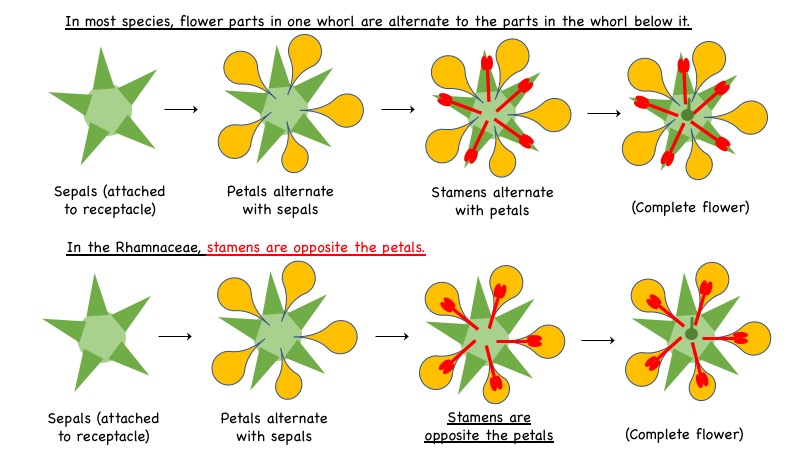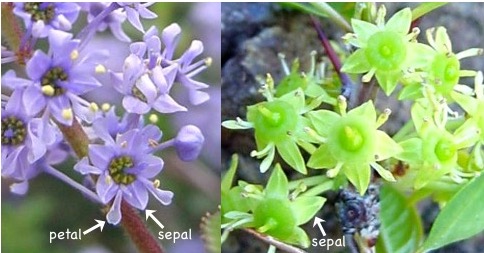The Rhamnaceae
Flowers of the Rhamnaceae, like the Rosaceae, also have hypanthia. The hypanthium in the flower of the Rhamnaceae is generally much smaller than you find in the Rosaceae. The most obvious difference between flowers of the Rhamnaceae and flowers of the Rosaceae is in the number and placement of the stamens.
Flowers of the Rhamnaceae have...
- 4 or 5 sepals
- the same number of petals, unless there are no petals. (Some species have no petals.)
- the same number of stamens as sepals (4-5)
- stamens that are opposite the petals (or opposite where the petals are supposed to be in petal-less plants)
Having "stamens that are opposite the petals" means that the stamens are on top of the petals or that the stamens and petals are pointing the same direction. This is not the usual arrangement in flowers. In most flowers, stamens are alternate with petals, meaning that their points of attachment are between the petals. The diagram below illustrates this difference:

Below are photos of two members of the Rhamnaceae. One has petals, and one does not. Where there are petals, the stamens are lying right on top of the petals, pointing the same direction. Where there are NO petals, the stamens alternate with the sepals. This puts them opposite ... where the petals ought to be, if this thing had petals.

Sometimes the sepals curl inward, as in the Ceanothus species below.
Check your understanding: